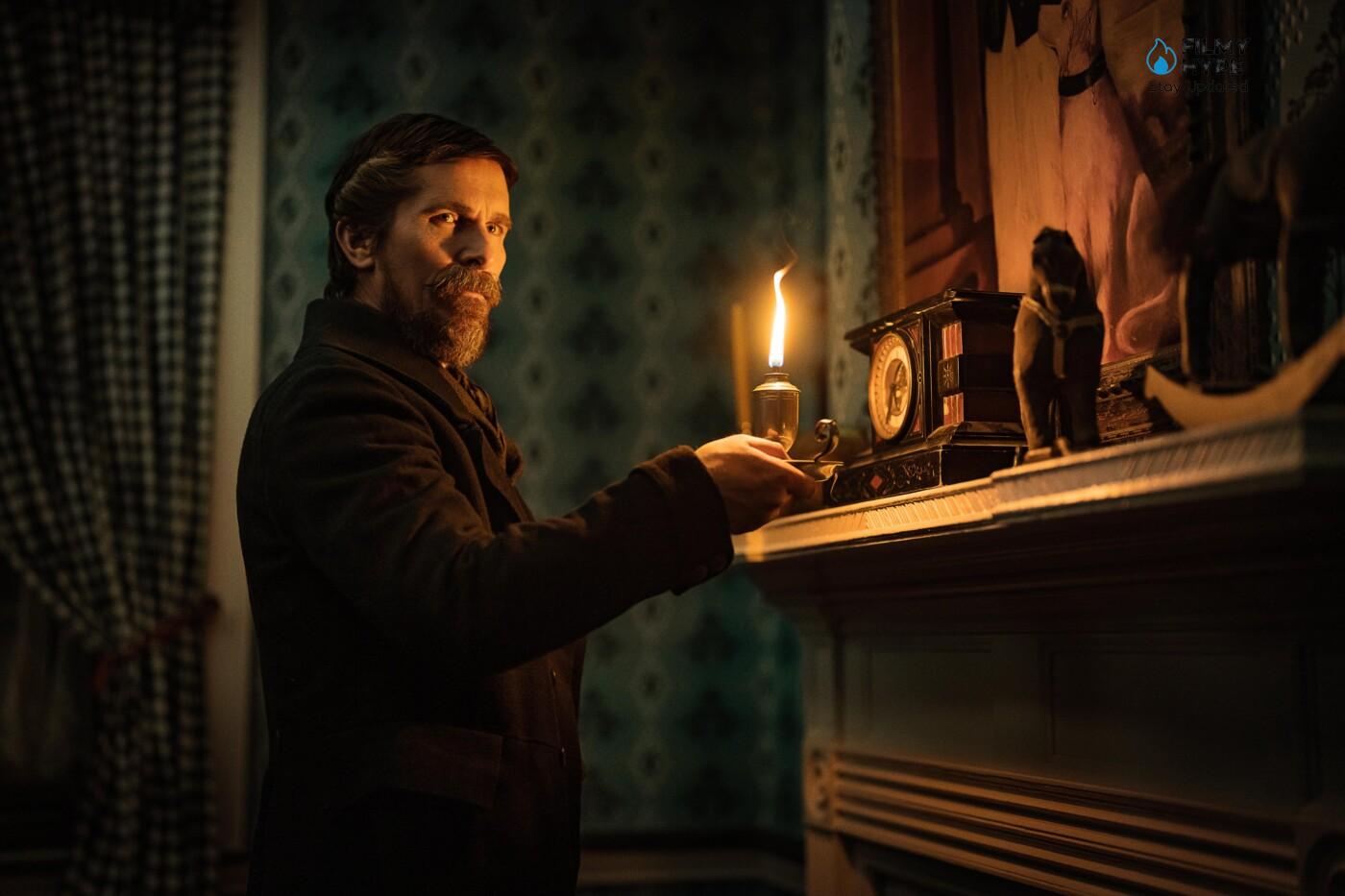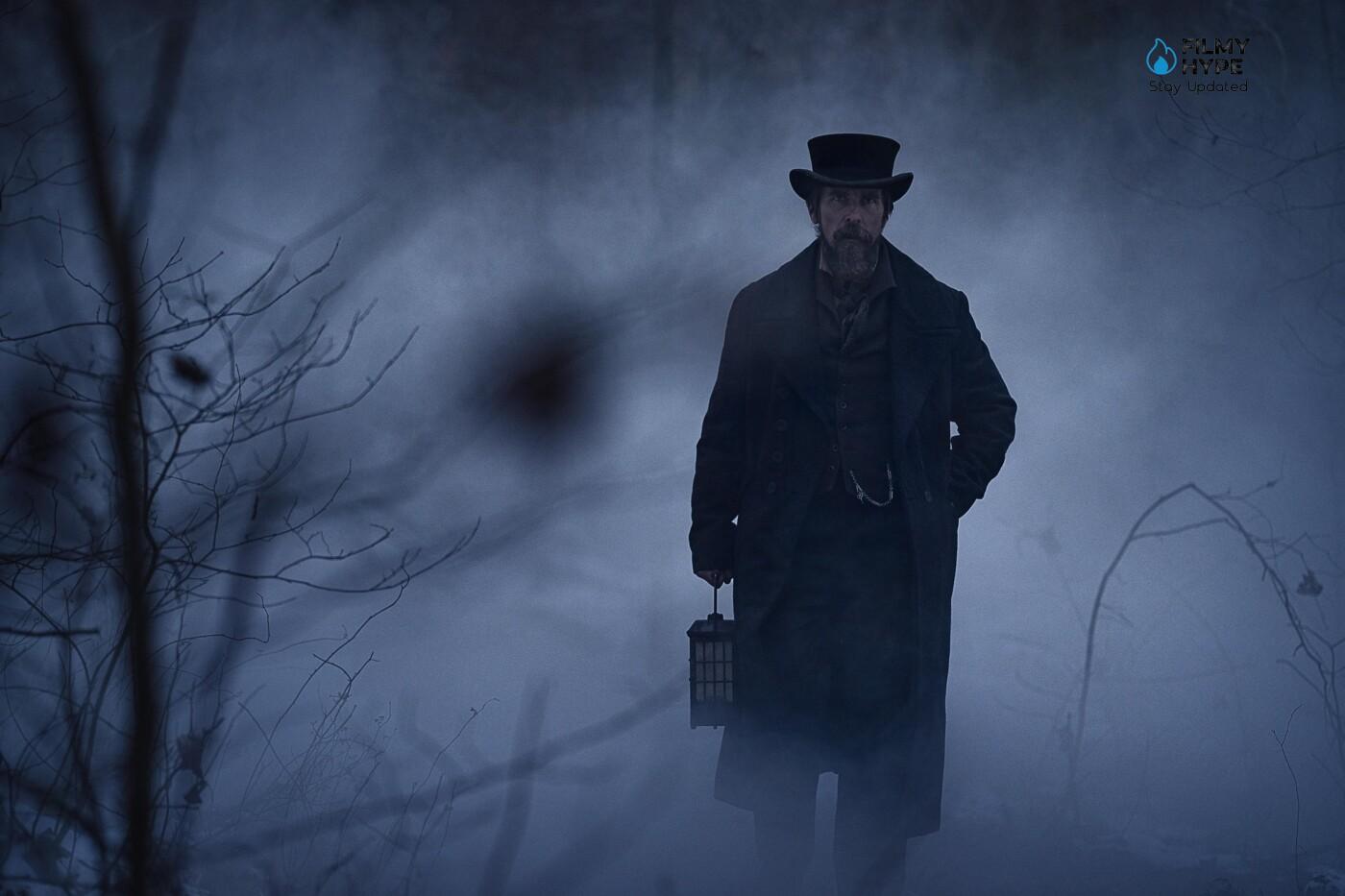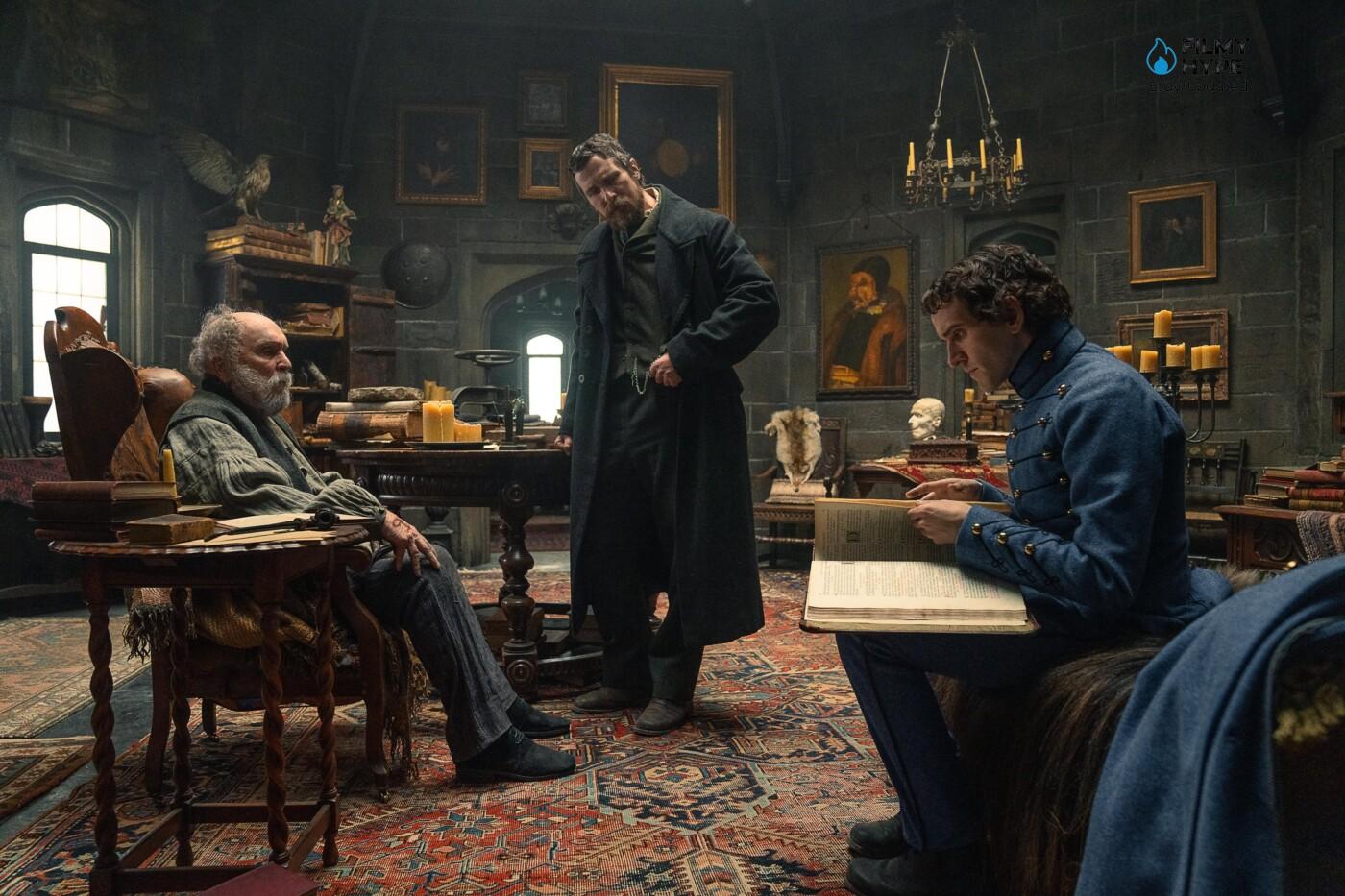The Pale Blue Eye Review: Christian Bale Playing Detective In Netflix Film
Cast: Christian Bale, Harry Melling, Gillian Anderson, Lucy Boynton, Charlotte Gainsbourg, Toby Jones
Director: Scott Cooper
Streaming Platform: Netflix
Filmyhype.com Ratings: 3/5 (three stars)
The Pale Blue Eye is the new film by Scott Cooper available from January 6 on Netflix. After six films directed in thirteen years, Cooper remains for us one of the great enigmas of contemporary American cinema. And we write it in a positive sense, as there is something in his works, however evidently imperfect, that continues to attract us towards them to review them, or rather “relieve” them. A subtle thread, still not obvious but vibrant, crosses genres and connects Crazy Heart with Antlers, Out of the Furnace with Hostiles: perhaps it is the underlying melancholy of stories and settings, or it could be the sense of predestination with which your characters have to deal. Whatever the reason, Cooper’s cinema has a deep and powerful appeal, these are feature films that are hard to shake off.

A cast that includes Christian Bale (but also Gillian Anderson and Robert Duvall), a crime story (with a sprinkling of seven satanic and bloody murders) and the presence of an iconic figure like Edgar Allan Poe as an improvised investigator (as well as an aspiring poet). A mix that on paper seems perfect for an intriguing historical thriller capable of deeply affecting (and shocking) viewers. Especially the large and varied audience – and lovers of this genre of crime stories, as evident from the biggest hits of the season such as Dahmer and The Watcher from Netflix.
The Pale Blue Eye Review: The Story Plot
The Pale Blue Eye, loosely based on the novel of the same name by Louis Bayard, confirms word for word what was previously written. Set in 1930, the film sees Detective Augustus Landor (Christian Bale) forced to rush to West Point Military Academy following an apparent suicide, which he immediately discovers is not a suicide. In trying to uncover the killer the detective gets the unexpected help of a young and ‘peculiar’ cadet named Edgar Allan Poe (Harry Melling).
The weak point of The Pale Blue Eye is the plot, and since it is a horror-tinged whodunit it is certainly not a small problem: the events that lead to the solution of the case are not narrated with the necessary rhythm and on more than one occasion they give the impression of being stacked out of respect for the rules of the genre more than possessing any real logical progression. Cooper’s film never ensnares the viewer with a tight plot or well-orchestrated twists and turns, and this paradoxically as well as being his flaw is also the strength of the project. Because with his dilated times and his attention to the characterization of the characters – of which the beautiful staging and snowy setting become precise and pugnacious metaphors – they manage instead to develop the two protagonists in depth and their metaphorical relationship of father and son.

The location is West Point Military Training School, the year is 1830. In the early hours of a snowy winter morning local detective Augustus Landor, a gruff veteran with a notoriously difficult and sad family history and a problem with alcohol is called by the heads of the military academy to solve a case that threatens to deeply undermine his reputation. Indeed, a cadet was found hanged. Not only that, but his corpse was also desecrated, and his heart was taken away. In his investigations, Landor comes across a young Edgar Allan Poe, a flamboyant cadet obsessed with poetry and the macabre. Together, these two somewhat unlikely characters will set out in search of the truth, which is never what it seems. A final twist will paint the picture of a story in which reality and humanity far surpass any other superhuman and magical dimension.
The Pale Blue Eye Review and Analysis
From this point of view, The Pale Blue Eye proves to be a powerful melodrama, punctuated with care and capable of leading the audience toward a truly dramatic final confrontation, which brings a painful story to fruition. And in the magnificent final sequence we are faced with a duet between pedigree actors, there is no doubt about it. But if we already knew Christian Bale‘s remarkable dramatic talents, the powerful confirmation comes from Harry Melling who fully understood and made the role of Edgar Allan Poe his own, giving him that existential pain that will make him one of the undisputed Master of Literature. of all times, not just gender.
As happens very often – perhaps even too often – in Scott Cooper’s cinema, also in The Pale Blue Eye we need to allow time: let the frame of the genre slip away and get closer to the history and psychology of Landor and Poe: you will then find yourself faced with a rarefied and engaging drama, set in an autumnal and melancholic film, which has the internal coherence that it concedes little or nothing to the superficial mainstream. And this can only be a huge advantage. Once again, Scott Cooper has managed to capture our hearts even before attention…
Let’s start with a confession: this is not my thing. This film, however, after a somewhat subdued beginning (but let’s not blame them, the story must build itself and take a run-up) exerted a subtle but growing fascination on me, culminating in the scene of the ritual. Without spoilers, The Pale Blue Eye is a fascinating, deeply gothic film that investigates not only the crime and desecration of a corpse, but also death and loss, family, and revenge. The actions of the culprits (and there is more than one) are moved by the same feeling: desperation. Poe’s complete surrender to love is nothing but despair itself. And there is no need to call into question wizards, witches and complex rituals: the darkest thing there is man.

Only man, with his impulses and his sadness, is willing to do anything to get where he wants, to save the people he loves, and to put an end to the things that hurt him, in his way. Despite this fascination (helped enormously by the skill of the cast, Harry Melling and Lucy Boynton in the lead) the film remains a bit too superficial for my tastes, too busy basking in its dark and profound being to analyze very interesting relationships and drives, which remain a bit like this, suspended. Maybe that’s the game, making us understand them without explaining them to us, in the irrationality that often reigns between interpersonal and family relationships, but in my eyes, it’s a bit of a waste.
However, the atmosphere and settings are completely convincing: The Pale Blue Eye is set in cold and inhospitable nineteenth-century New York State. The snowy landscapes, in addition to creating parallelism with the protagonist’s inner world, become the perfect counterpart to the disturbing murders that we see happening on the screen, as if the coldness of the setting made certain facts even more crude and grotesque: one of the first scenes, that of Fry’s autopsy in the great hall of the military academy in which Landor is present, is the perfect example of the disconcerting representation of death that we find in the film, capable of also creating a profound connection with Poe’s work.
The Pale Blue Eye is therefore a film which, as we said, partially disappointed us, but which however in its own way also particularly fascinated us, also due to the original premises from which the story (taken from the novel namesake of Louis Bayard) kicks off. The Pale Blue Eye starts from extremely interesting premises but disappoints for a story with a too-slow pace and predictable surprises. Satisfying ending and an excellent setting. As always, Christian Bale’s interpretation is perfect, perhaps a little more caricatured and over the top than those of his supporting actors.
The Pale Blue Eye Review: The Last Words
In short, the film ends up knowing little and it is Christian Bale’s second consecutive fiasco, after the disastrous Amsterdam. With her, he shares having a cast that is not at the service of a solid story. The third meeting between Scott Cooper and Christian Bale after The Law of the Strongest and Hostiles ends positively but without reaching the high expectations that the footage generated at the beginning. The first hour of footage is quite atmospheric and easily engaging thanks to Masanobu Takayanagi’s cinematography.







